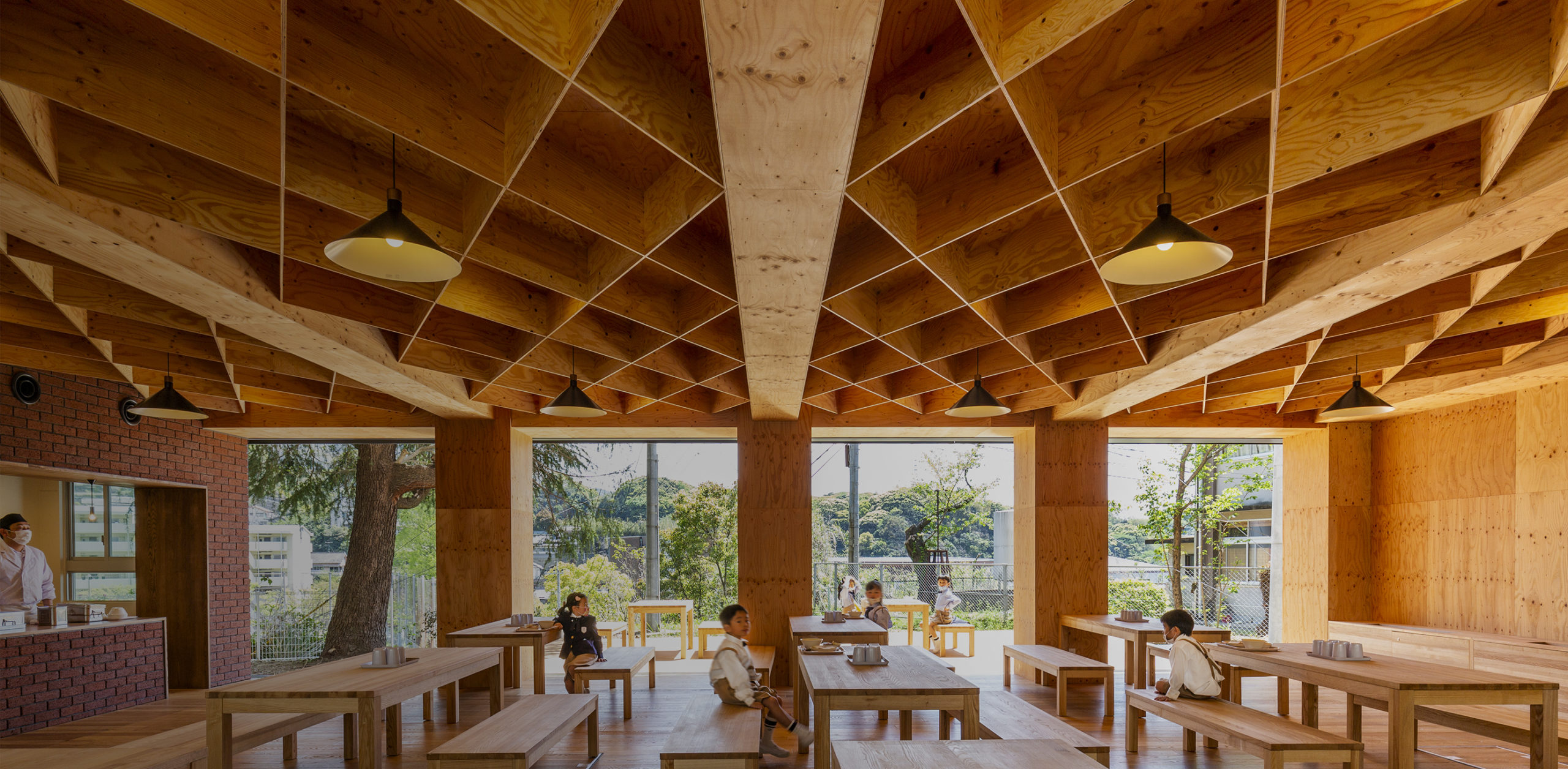Architects: Showcase your next project through Architizer and sign up for our inspirational newsletter.
Brutalism is back. The long-maligned style, with its glorious exposed concrete surfaces, has seen renewed interest across the globe. Perhaps nowhere more-so than in the tropics where concrete was a hallmark of late modernist construction projects. While brutalism may be best-known for obtrusive public developments, these six designs showcase a domestic side of brutalism, conscientiously integrated into natural surroundings with local construction methods.
Owing to tropical climates, pools abound in these eco-brutalist projects, which span the globe from Costa Rica to Bangladesh. Incorporating greenery and plants into brutalist residences, these projects show how a new generation of architects is interpreting the legacy of icons such as Paulo Mendes da Rocha and Louis Khan for smaller private projects across the global south.
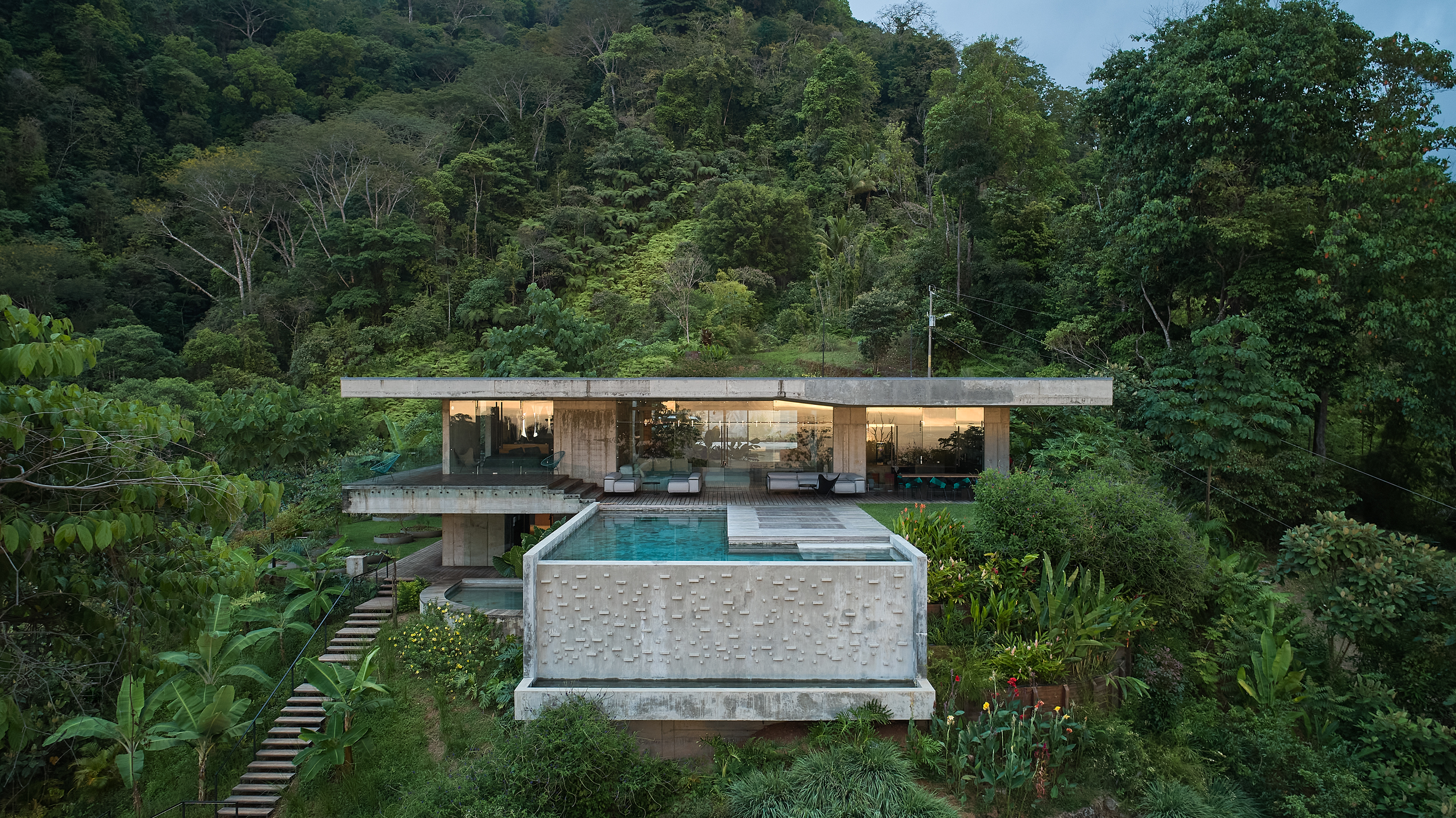
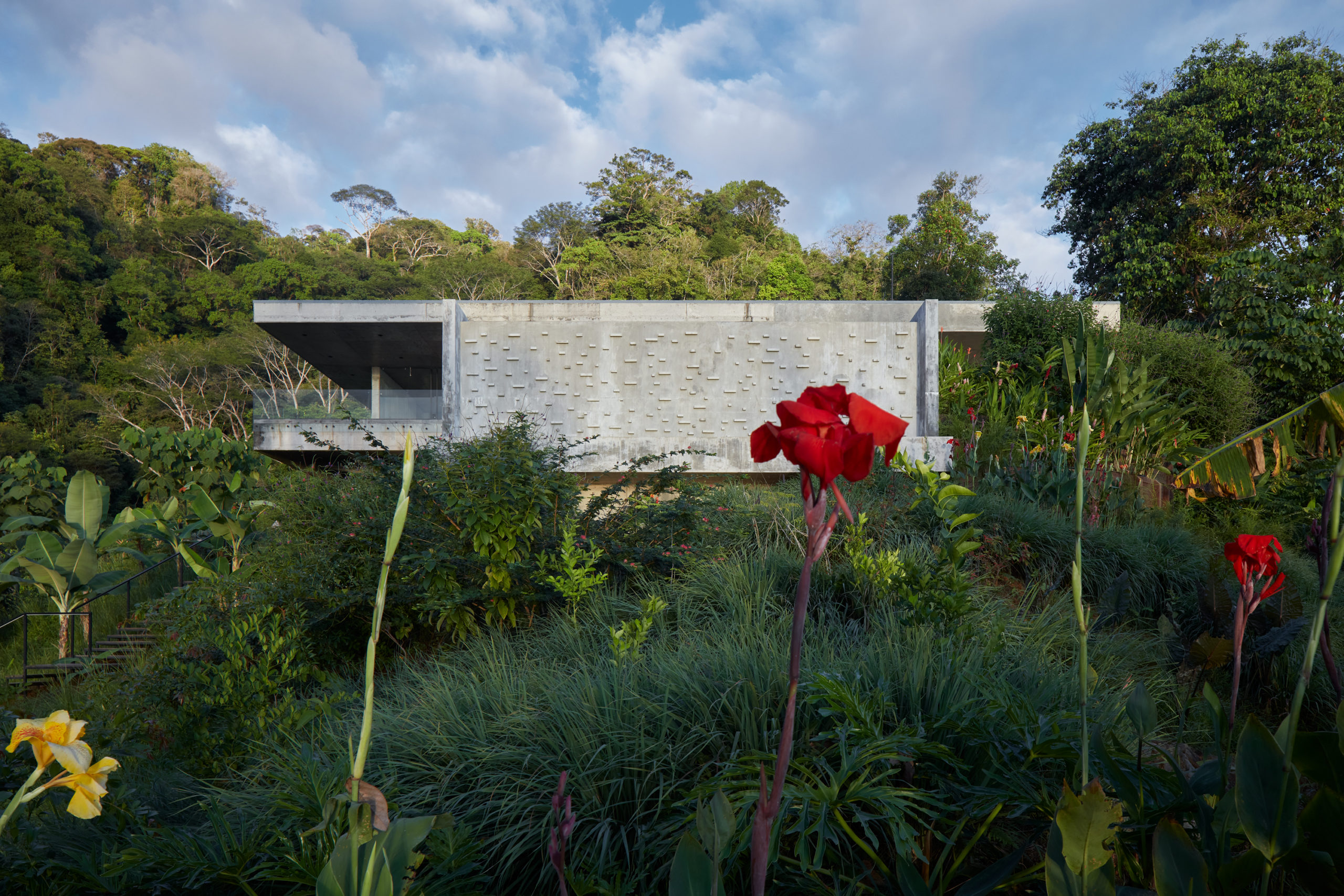
Art Villa by Formafatal, Pérez Zeledón, Costa Rica
Art Villa is the first of three palatial tourist residences constructed in the Costa Rican rainforest overlooking Playa Hermosa. For the project, Czech architectural studio Formafatal was inspired by the local environment and the concrete wonders of Paulo Mendes da Rocha in Brazil. Mendez da Rocha’s influence resonates in the all-concrete construction that generates a striking juxtaposition with the forest’s shades of green.
A grey concrete pool juts off the hillside, from the center of the villa. Floor to ceiling glass opens to unobscured ocean views. The interior is furnished with custom made pieces from Central America and Czechia, including the wonderful jungle tile mural in the kitchen featuring two sloths. Paulistano armchairs are a final nod to the Brazilian architect.
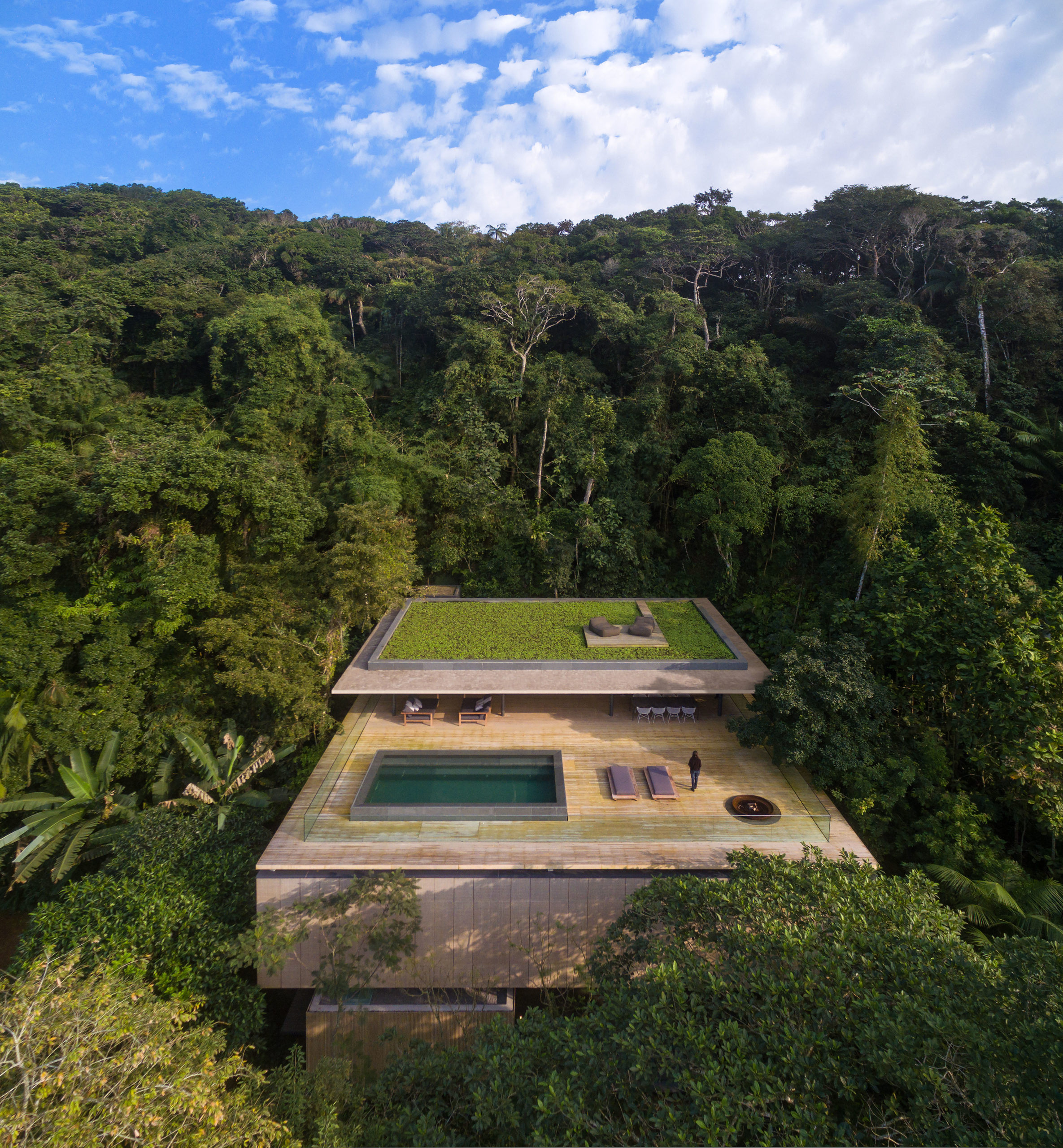
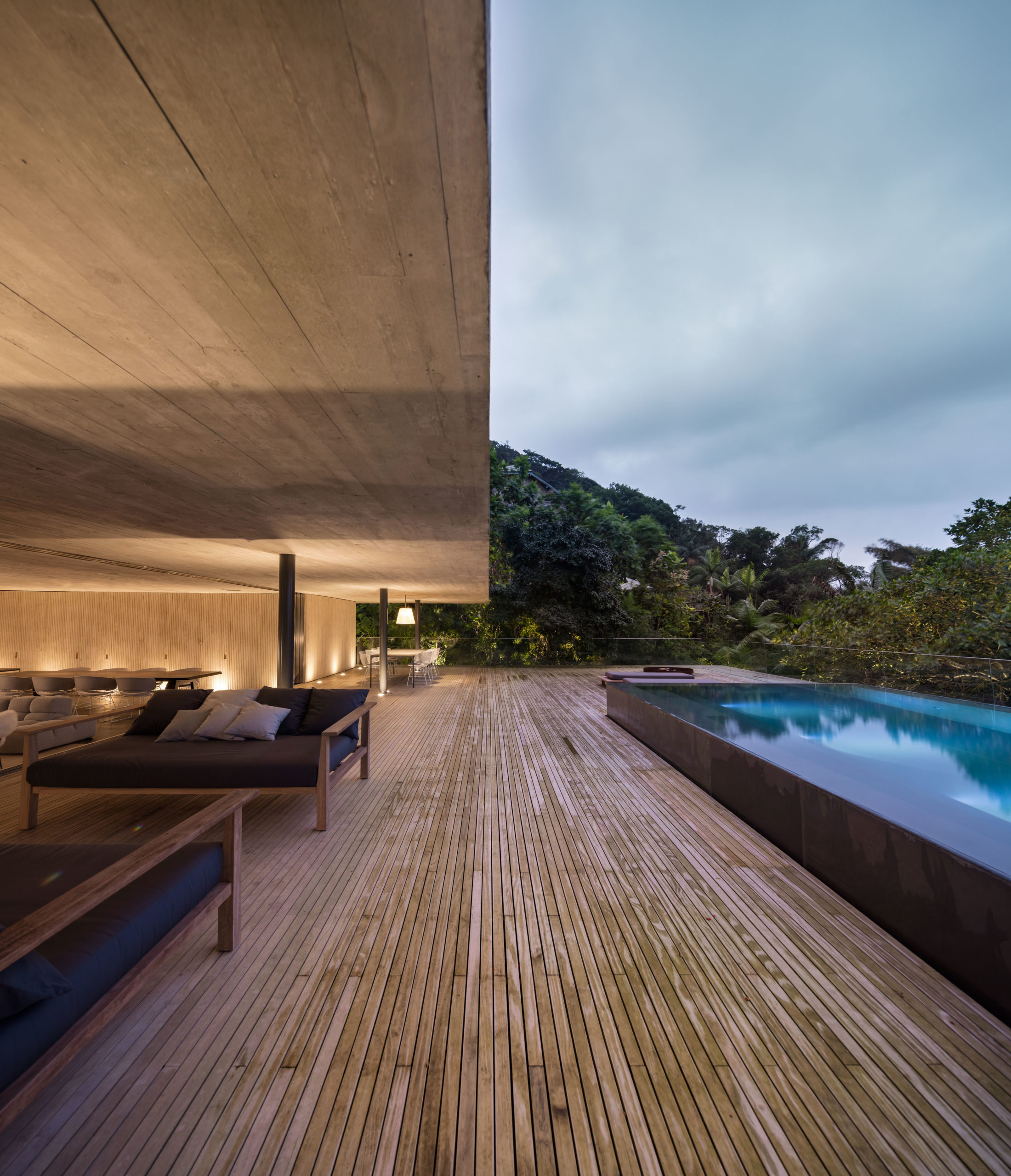
Jungle House by studio mk27, Guarujá, Brazil
Terraced into the jungle on the coast of Guarujá, southeast of São Paulo, Jungle House is a concrete refuge. The three floors of the house emerged from studio mk27’s desire to organically conform the house to the site. To achieve harmony with the topography, the house is elevated from the ground, with the main floors projecting from the hillside.
There are two wellness spaces, the first with a pool is located on the terrace offering expansive views, and the second, more private jacuzzi is on the deck facing dense vegetation. Because tropical forest encloses the house, climbing each floor offers a unique experience of that particular layer, ending with the canopy.
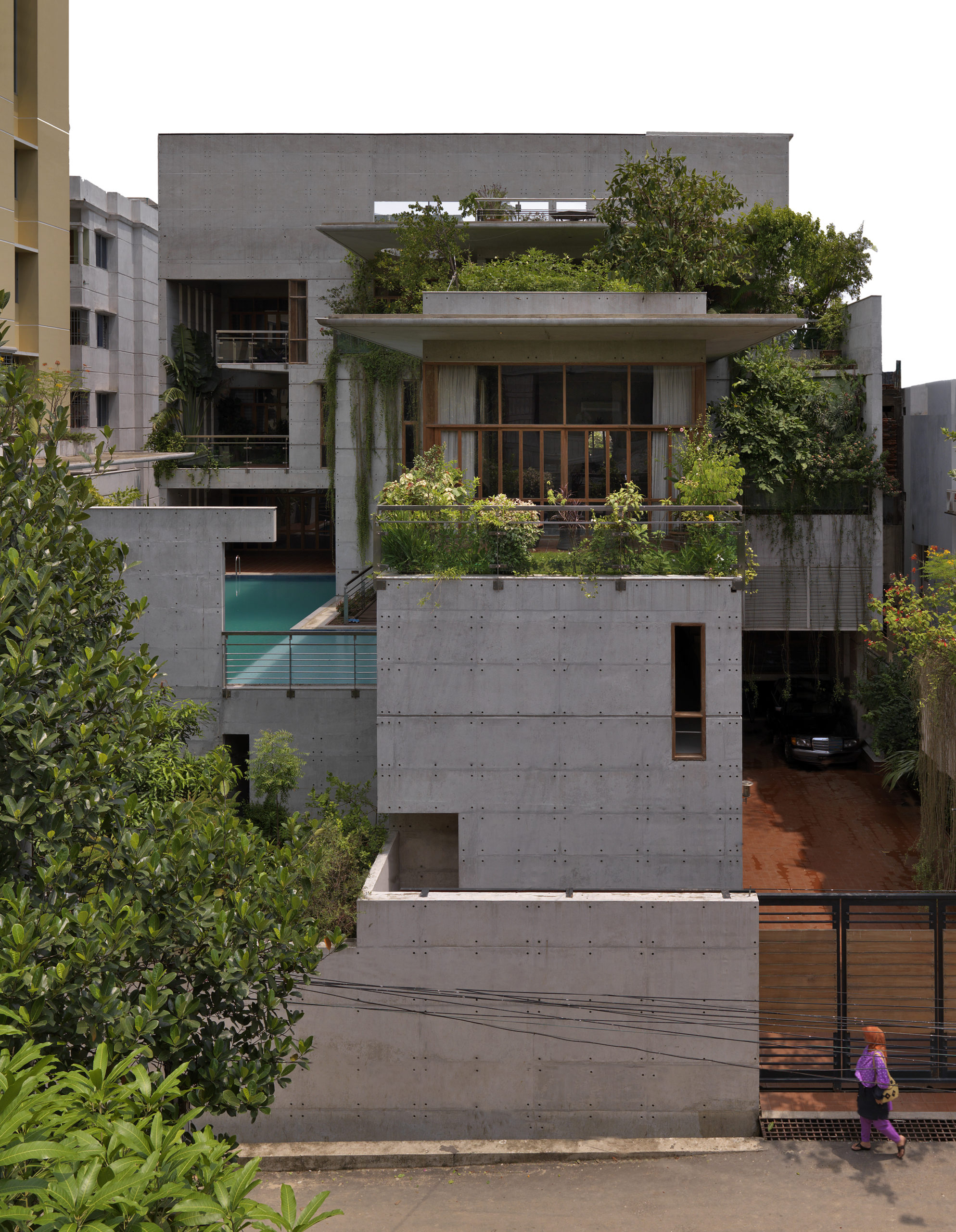

Mamnun Residence by SHATOTTO architecture for green living, Chittagong, Bangladesh
The mathal hat worn by local farmers provided design inspiration for the Mamnun Residence. Responding to the intense year-round sun, the SHATOTTO architecture for green living designed a large projecting roof to provide shade and structured the space to benefit from the prevailing winds. Layered balconies filled with greenery provide further respite from the heat.
On the second floor, a spacious pool is framed by exposed concrete edges. Plants cascade down towards the pool from the above balconies. The extensive use of concrete was also beneficial for the climatic and seismic conditions of southern Bangladesh.

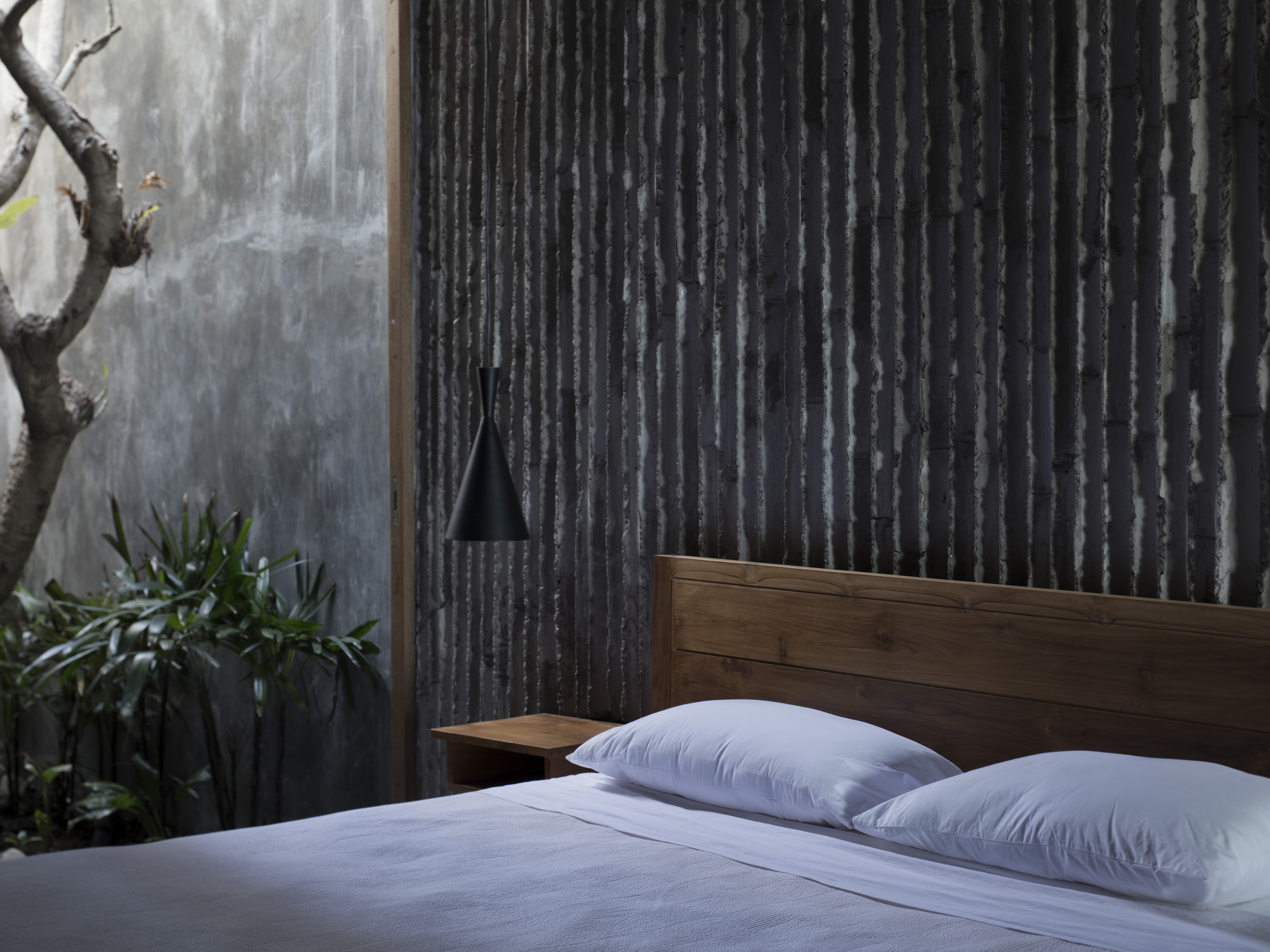
The Tiing by NIC BRUNSDON, Bali, Indonesia
Tucked away on Bali’s northern coast, The Tiing is a boutique resort inspired by local construction methods and materials. To achieve this vision, interior walls were cast against bamboo, an environmentally friendly interpretation of board framed concrete construction.
Rough concrete surfaces created by the bamboo molds generate a textural contrast with alternating sleek polished concrete. Each room features its own secluded pool, protected by extending walls. To arrive at the resort, a meandering 2.5 hour journey through Bali is required, making the resort an escape for the determined and discerning traveler.
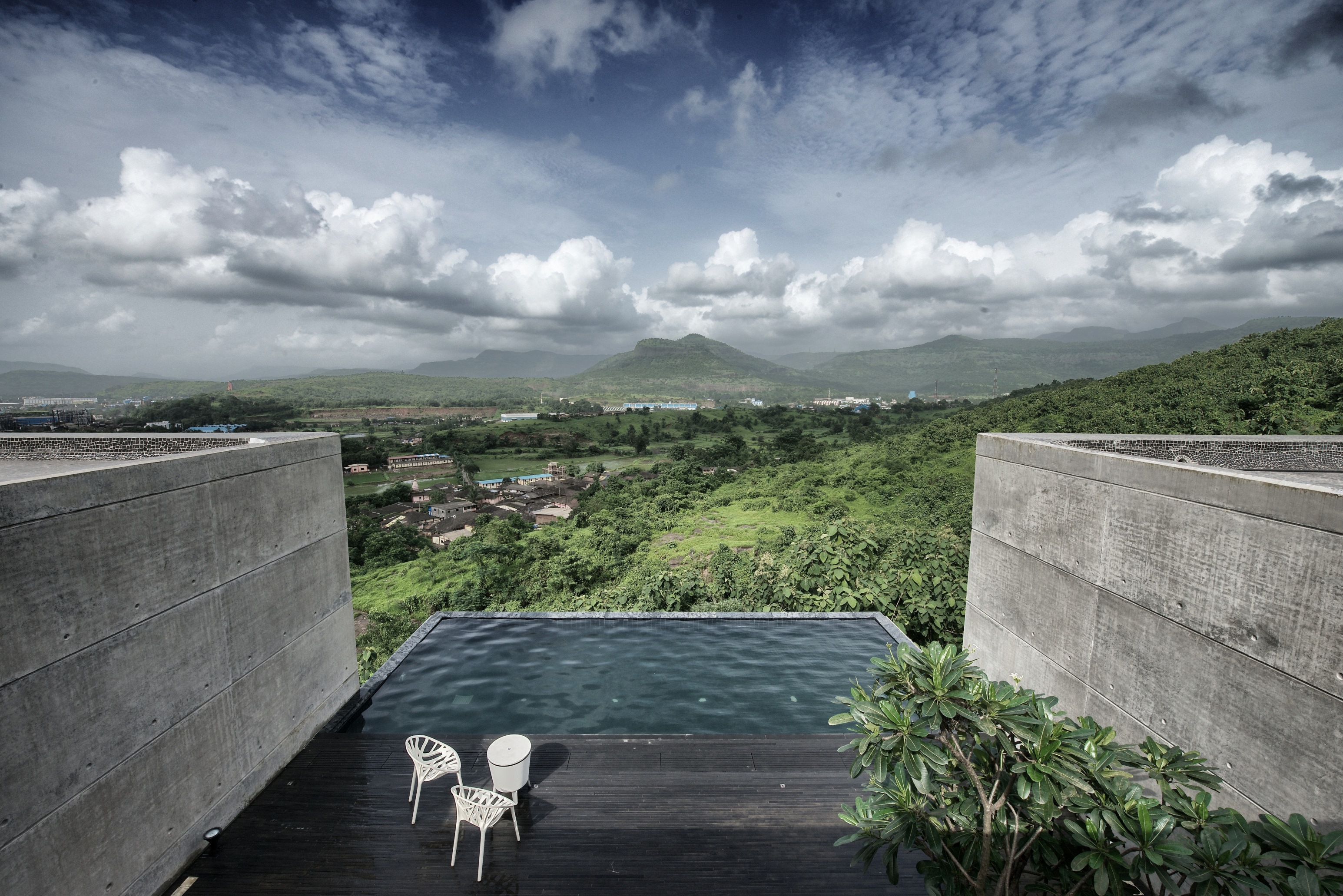

The house cast in liquid stone by SPASM Design Architects, Khopoli India
SPASM Design Architects intended for the house to be an extension of the basalt outcrop it was built upon. Extensive use of concrete transformed it into a “casting of liquid stone.”
Focusing on basalt did not only inform the design, the stone is a principal material of the home, used in the slatted terrace patio, steps and set into the concrete rooftop walls. The horizontal roofline gives the residence an appearance of being gently pressed in the hillside. Views from the rooftop pool extend over the surrounding landscape.


Casa Meztitla by EDAA | Estrategias para el Desarrollo de Arquitectura, Tepoztlán, Mexico
Casa Meztitla masterfully integrates local volcanic stone with exposed concrete to harmonize with its natural surroundings. To address the environmental impact of the pool, the roof collects rainwater which is then stored in a cistern beneath the villa.
Almost all of the rooms open to the outside, through a combination of sliding and rotating doors. A central courtyard facing an igneous retaining wall is particularly wonderful. The narrow pool, with an inset hot tub, is set back from the house in a grove of trees. Its concrete walls are contoured and elevated to fit the landscape.
Architects: Showcase your next project through Architizer and sign up for our inspirational newsletter.






 Casa Meztitla
Casa Meztitla  Jungle House
Jungle House  The house cast in liquid stone
The house cast in liquid stone 
